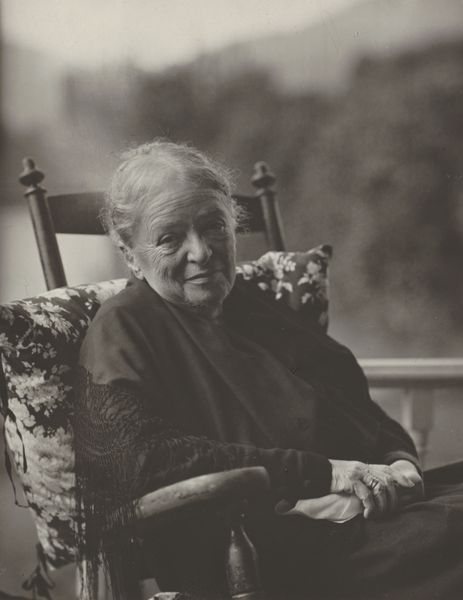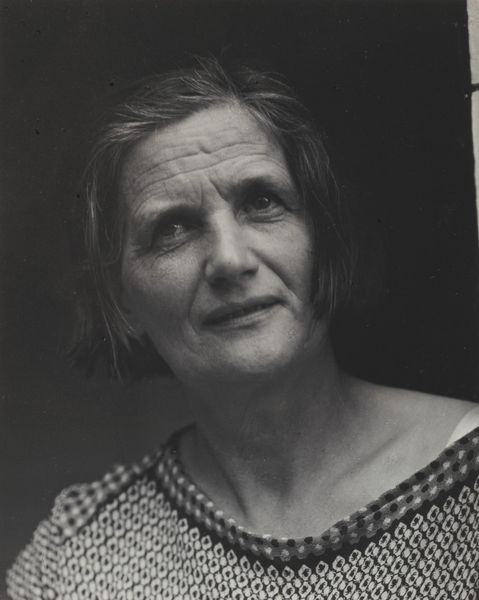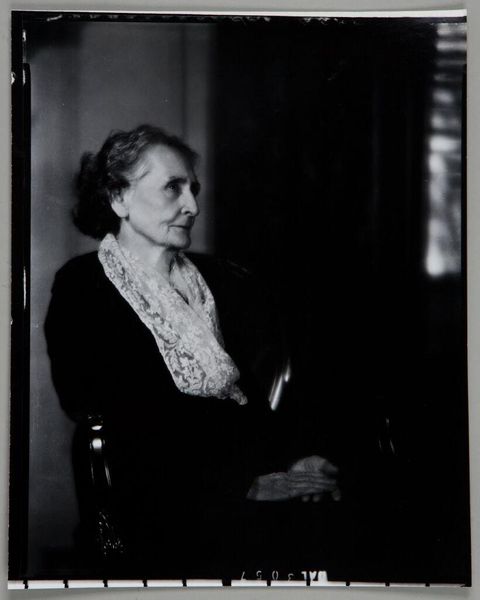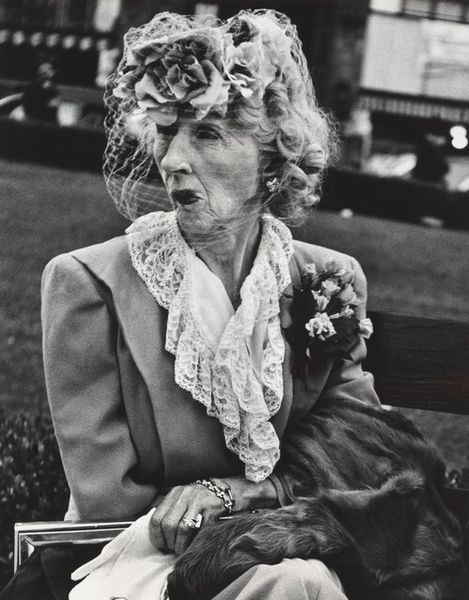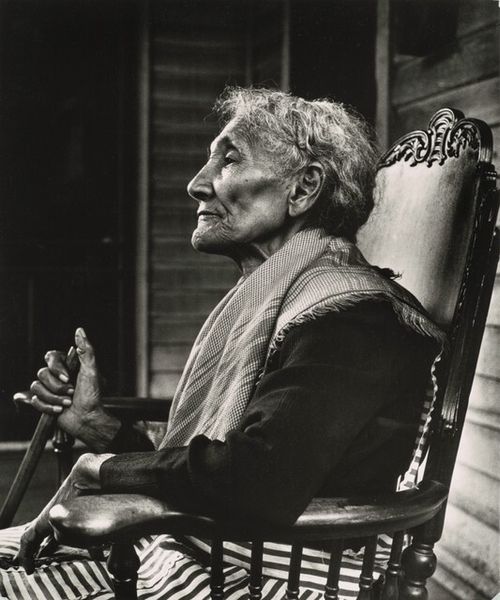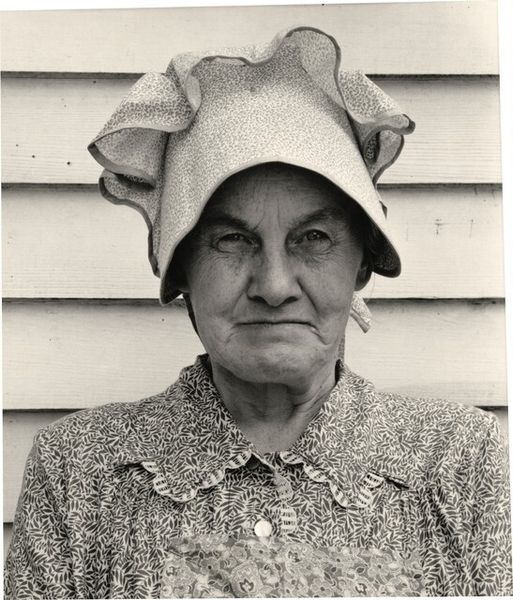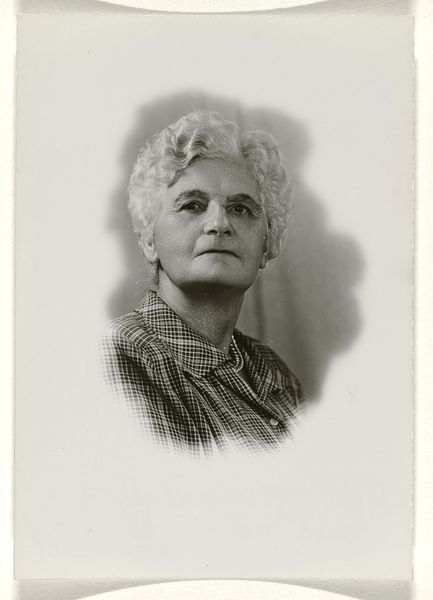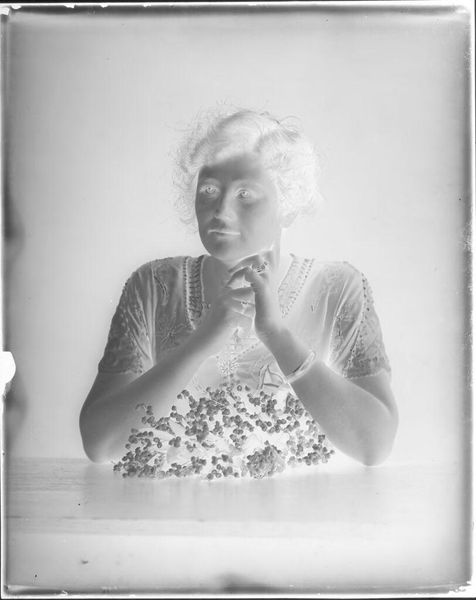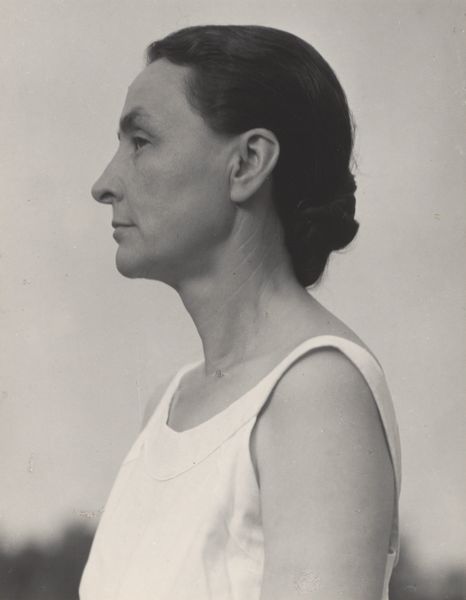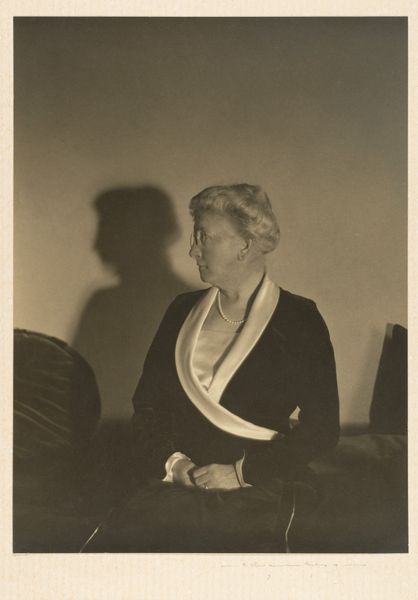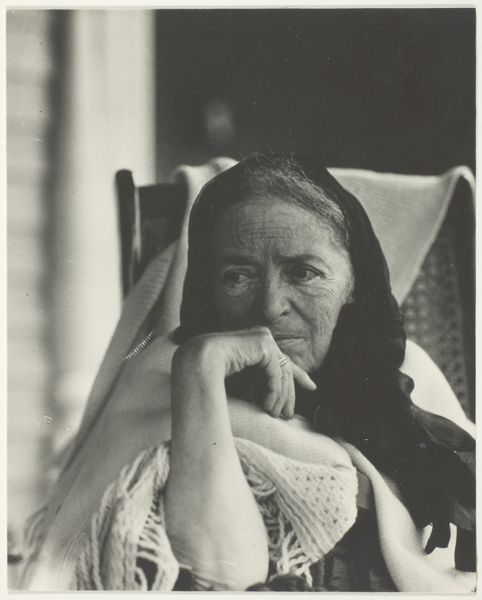
Mary Ann Savage, a faithful Mormon all her life, Toquerville, Utah c. 1931s - 1941s
0:00
0:00
photography, gelatin-silver-print
#
portrait
#
black and white photography
#
portrait image
#
black and white format
#
street-photography
#
photography
#
black and white theme
#
black and white
#
gelatin-silver-print
#
monochrome photography
#
monochrome
Dimensions: image/sheet: 35.2 × 27.9 cm (13 7/8 × 11 in.) mount: 38.2 × 28 cm (15 1/16 × 11 in.)
Copyright: National Gallery of Art: CC0 1.0
Curator: Dorothea Lange's photograph, "Mary Ann Savage, a faithful Mormon all her life, Toquerville, Utah," a gelatin-silver print from circa 1931 to 1941, immediately strikes me as one of profound dignity. The delicate rendering of light and shadow invites a concentrated viewing. Editor: There’s an incredible quietude in this image, almost a stillness. It reminds me of the worn textiles and the simple lives of those in the Great Depression, emphasizing both resilience and hard labor. I'm interested in how the image becomes a commodity, taken for political purposes. Curator: Consider the composition itself. Lange positions Mary Ann in profile, set against a leafy, indeterminate background. Her profile presents a landscape marked by age, etched with experience. The soft focus draws attention to her silhouette and subtle facial details. Note the elegant wave of her hair, a contrast to the textured fabric of her clothing. Editor: And the clothing itself speaks volumes! The choice of fabric is not arbitrary. It represents an act of domestic labor. Quilting, dressmaking--these were essential skills. That very specific plaid fabric could indicate the limited resources available to her at the time. These textures become signs of poverty made visible. Curator: Indeed. And yet, despite that implication of scarcity, Lange's formal treatment elevates Savage's status. It presents her as a figure of quiet strength. Her gaze is directed off frame, alluding to untold narratives, creating both proximity and distance in her visual encounter. The play of light accentuates the depth within the composition, achieving formal harmony in her posture and poise. Editor: Lange was often contracted during the Depression, which makes you question who the audience of the final work will ultimately be, especially since Mary Ann herself would most likely not see her portrait in a gallery. How does that imbalance inform our own reading of this woman's life? Whose story are we really seeing? Curator: I appreciate how Lange allows this face to confront us on its own terms through careful use of tone and shadow. While our historical contextualization may color the viewer’s gaze, the work offers us, most centrally, a distilled aesthetic essence. Editor: For me, Lange’s photograph serves as a powerful reminder of the material conditions under which so many lives were shaped, where photographs themselves become contested documents, tools for political discourse as much as for pure aesthetic enjoyment.
Comments
No comments
Be the first to comment and join the conversation on the ultimate creative platform.
